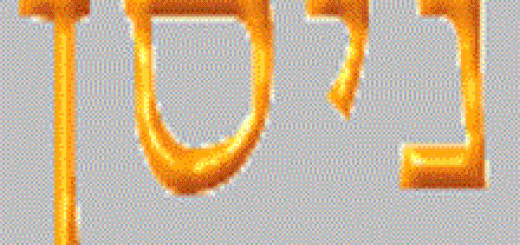By: Rabbi Dovid Markel
The seven week period between the second day of Pesach and the holiday of Shavous is known as the time of Sefiras HaOmer.
Twice the Torah mentions this commandment: once in Parshas Emor and the other in Parshas Re’eh. In Parshas Emor[1] Hashem instructs the Jewish People: “You shall count for yourselves from the morrow of the rest day, from the day that you bring the Omer of wavings—seven weeks, they shall be complete. Until the morrow of the seventh week you shall count 50 days; and you shall offer a new meal-offering to HaShem.”
The Torah reiterates this commandment once again is Parshas Re’eh[2], saying: “You shall count seven weeks for yourselves; from when the sickle is first put to the standing crop you shall commence counting seven weeks.”
The above verses describe the mitzvah of the counting and offering of the Omer. During the Temple times, a special mincha offering was brought on the altar on the second day of Pesach from the first cutting of the grain harvest. The Jewish People would commence the counting of the 49 days until the holiday of Shavous, when the Sh’tei HaLechem, the bread offering, was brought.
Though the Temple is no longer standing and we do not bring the grain offering today, we still count the days from the second day of Pesach until Shavous[3].
What is the reason for the counting, however? Why specifically by this mitzvah do we count the days that pass between the two offerings–something that isn’t done by other mitzvos? In addition, if one has ever counted the Sefira, he’d notice that the counting is done in an odd manner, different from most standard forms of tallying. Rather than counting down the days, taking note of how many days are remaining, we count up, enumerating the days that have already passed in the journey toward the goal.
The following is a translation of the Chinuch[4] that explains the general intent of this mitzvah as well as the rationale behind this peculiarity:
“The root of this mitzvah, in its straightforward meaning, is that the core of the Jewish people is none other than Torah, and for the sake of the Torah were created, heaven, earth and the Jewish people; as it is written, “If not for my covenant [of Torah] day and night, I would not have set the ordinances of heaven and earth[5].” It was for this intent and purpose that the Jewish people were redeemed and left Egypt—so that they accept the Torah at Sinai and fulfill it. As HaShem said to Moshe, “And this is your sign that I have sent you: when you have taken the nation from Egypt, you will serve HaShem on this mountain[6].” The meaning of the verse is as follows: You taking them out of Egypt will be a sign that you will serve HaShem on this mountain—meaning to say, that you [the Jewish people] will receive the Torah which is the primary purpose for which they were redeemed, and the ultimate good for them. This is a great matter for them, more than the liberation of freedom from slavery. It is for this reason that HaShem made their exodus from slavery as a sign for the receiving of the Torah, for the subsidiary is always made as the sign for the matter of primary importance.
“Now, because it [the Torah] is the core of the Jewish people, and that for its sake they were redeemed and raised to the heights that they rose to, we are commanded to count from the morrow of the holiday of Pesach until the day of the giving of the Torah. [This is] to show with our very beings the great desire for the distinguished day that we long for in our hearts, “like a slave that awaits the [evening] shade[7],” and who constantly counts, when will come the time of freedom that he longs for. For counting exhibits that the individual’s entire hope and desire is to reach that time.
“It is for this reason that we count from the Omer, i.e such and such days have passed out of the total, and we do not count, “such and such days are left to that time”—since all this exhibits within us the great desire to reach that time. We therefore do not wish to mention the many days that are left to the Sh’tei HaLechem that are brought on Shavout [as this would bring out the dismay of the many days that remain].”
In the teachings of Chassidus it is explained that the holidays are not merely events in the past, but that they reoccur every year. We don’t merely commemorate the receiving of the Torah in the year 2448, but we actually re-live the event and personally receive the Torah every year. Just as the first year we awaited its coming with baited breath and anticipation, so too do we anticipate this precious gift every year. May we indeed receive the Torah again this year with an internal joy like in years past!
[1] Vayikra 23:15-16
[2] Devarim 16:9
[3] There is a discussion among commentators whether in our times, when the Omer is not brought, the mitzvah of the counting is biblical or rabbinic. The Rambam writes in Hilchos Temidin Umusafin (7:24) that even in our times it is a biblical commandment. Most other commentaries however, say that it is merely a rabbinic commandment to commemorate the counting that was done in Temple times. See Menachos 66a and Rashi there, Ran Psachim 28a, and the Baal HaMaor there.
[4] Mitzva 306
[5] Yirmiyahu 33:25
[6] Shemos 3:12
[7] Iyov 7:2






















